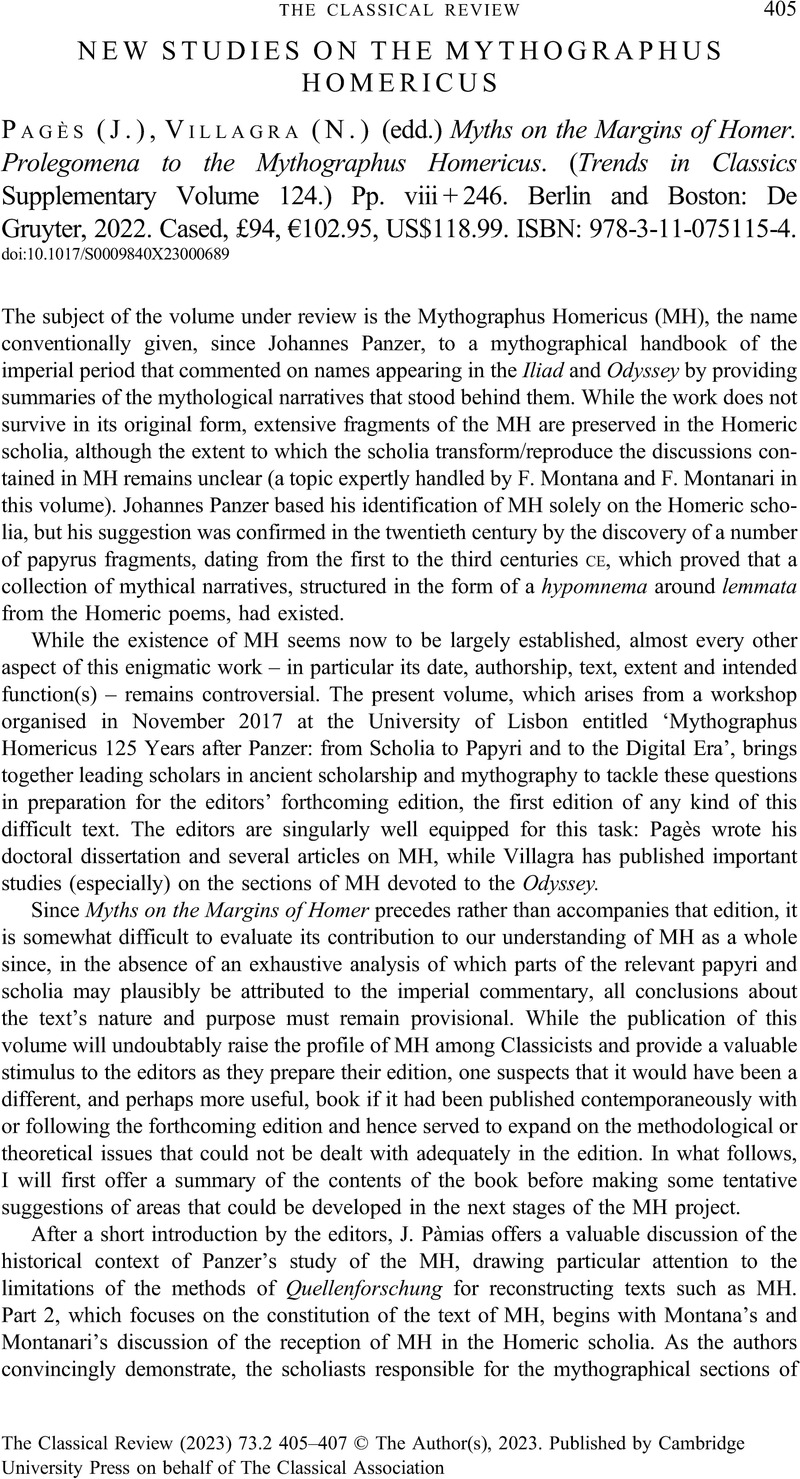No CrossRef data available.
Article contents
NEW STUDIES ON THE MYTHOGRAPHUS HOMERICUS - (J.) Pagès, (N.) Villagra (edd.) Myths on the Margins of Homer. Prolegomena to the Mythographus Homericus. (Trends in Classics Supplementary Volume 124.) Pp. viii + 246. Berlin and Boston: De Gruyter, 2022. Cased, £94, €102.95, US$118.99. ISBN: 978-3-11-075115-4.
Review products
(J.) Pagès, (N.) Villagra (edd.) Myths on the Margins of Homer. Prolegomena to the Mythographus Homericus. (Trends in Classics Supplementary Volume 124.) Pp. viii + 246. Berlin and Boston: De Gruyter, 2022. Cased, £94, €102.95, US$118.99. ISBN: 978-3-11-075115-4.
Published online by Cambridge University Press: 02 May 2023
Abstract
An abstract is not available for this content so a preview has been provided. Please use the Get access link above for information on how to access this content.

- Type
- Reviews
- Information
- Copyright
- Copyright © The Author(s), 2023. Published by Cambridge University Press on behalf of The Classical Association



